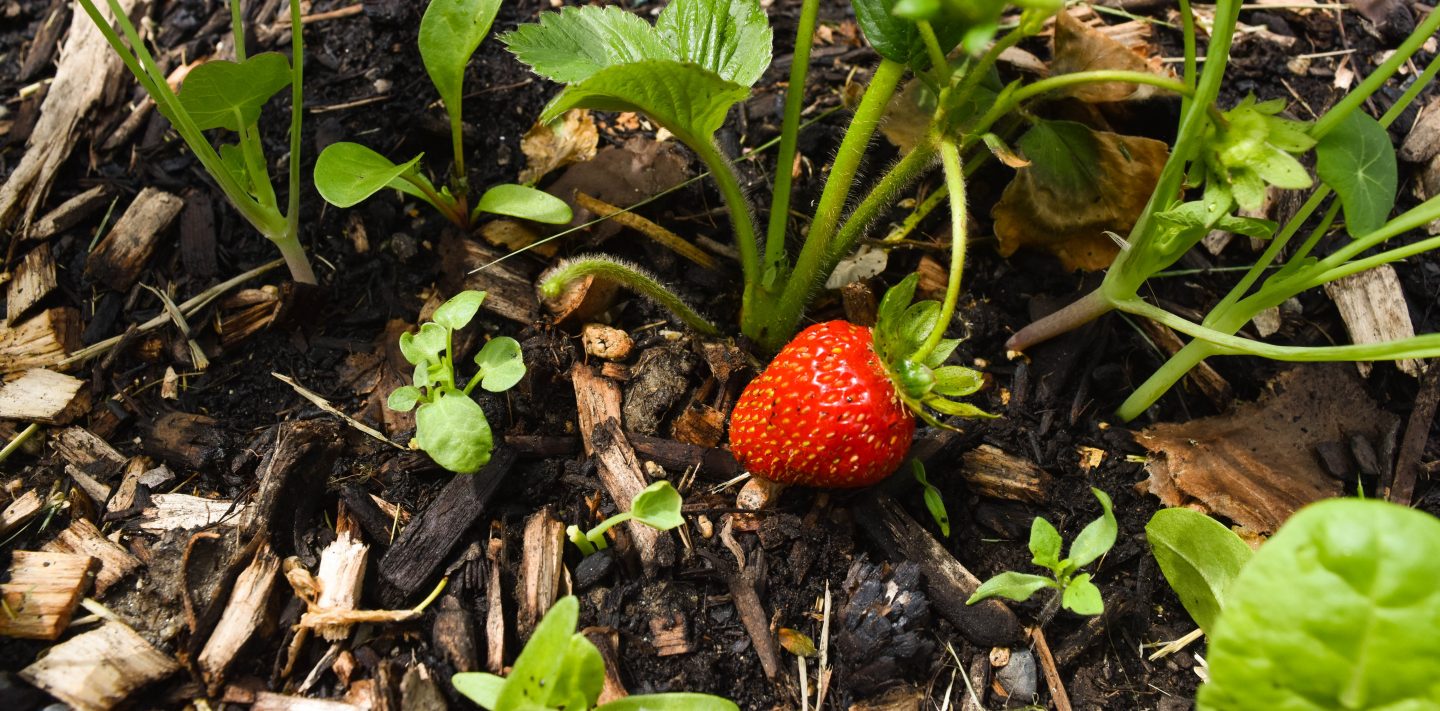Here at NorKam Secondary in Kamloops, BC, we are lucky enough to have a culinary program with a full commercial kitchen. We wanted to connect to the Farm to School program to teach our students how to grow, eat, and compost their own food, and learn to appreciate local food and connect them to our local food system.
We started our program with lofty goals and high expectations, it’s always good to aim high! Our 2015/16 school year goals were to plant a garden and grow food for the cafeteria and salad bar program, set up a compost system to compost all of the food scraps from the culinary program, bring in a cow from a local farm and learn how to butcher it, and start a microgreens growing system.
By May of 2016 we were able to accomplish all four.
Starting the Garden
We got a plot at community garden site at nearby McDonald Park in the fall of 2015 through our partnership with Interior Community Services. It was wonderful to work with Shelaigh Garson (former Community Gardens coordinator) who taught our Culinary and Foods classes about growing seasons, growing zones, how to start seeds and transplant them, food security, and generally getting them excited about the prospect of gardening.
To travel to the community garden we walked about 15 minutes each way, but when we realized that we were spending half of our class walking there and only spending 15-30 minutes at the garden, we realized we had to find a way to have a garden at the school.
Growing our Own Garden
Working with the school’s administration and groundskeepers, we got permission to start a garden in our courtyard; a much more convenient location! Since we do not have regular access to it during the summer, we planted fruit trees, fast-growing greens for our salads, and perennials for a low maintenance garden.
We also received a grant from Interior Health to create a blog about how to start and grow school gardens in BC’s Interior, here is a link to it, though the site is still under construction (as is our garden!).
This is how our garden progressed from November 2016 to May 2017! We now have two garden boxes, apple and plum trees, a grape vine, and lots of greens and perennials growing.
Our Compost
We compost all of the food scraps from our cafeteria program, and we needed a system that would break down food quickly! We had two rolling composters and a black plastic one, but they were not keeping up with the quantity of the organic waste. We purchased a Jora composter (see above) which has been working well and breaking food down in a matter of weeks.
We also built vermicompost bins for the grade 4/5 classes at Arthur Hatton, it was fun to work to with the red wriggler worms and drill holes into the containers! You can follow this link here to see something similar to what we did.
Our Microgreens
We were interviewed by CBC about our microgreens. They are an easy, quick-growing food (learn how to grow them) that work really well for schools. One student said, “We learned how to grow plants in our garden and microgreens, how to take care of them, and most importantly, how to prepare them to use in salads and other dishes.”
Salad Bar
We received a grant from Farm to Cafeteria to expand our salad bar program, which made for a fresh, healthy addition to our regular lunch service. The students began this last semester by growing their own vegetables, herbs and microgreens to improve our cafeteria’s menu selection, quality, and freshness of food.
Farmers’ Market
The Foods class went to the Kamloops Regional Farmers’ Market in March, and the students learned about how farmers store their crops during the winter. The students got to ask lots of questions and try different types of food, and purchased some for their salad bar (including honey, eggs, cabbage, onions, beets, and carrots).
We want to thank all of our community partners including Interior Health, Kamloops Food Policy Council, Interior Community Services, Kamloops Regional Farmers’ Market, and especially to our funders Farm to School and Farm to Cafeteria! Our students are learning about food in a very practical and engaging way (including this colorful brick art we made for the garden!).










